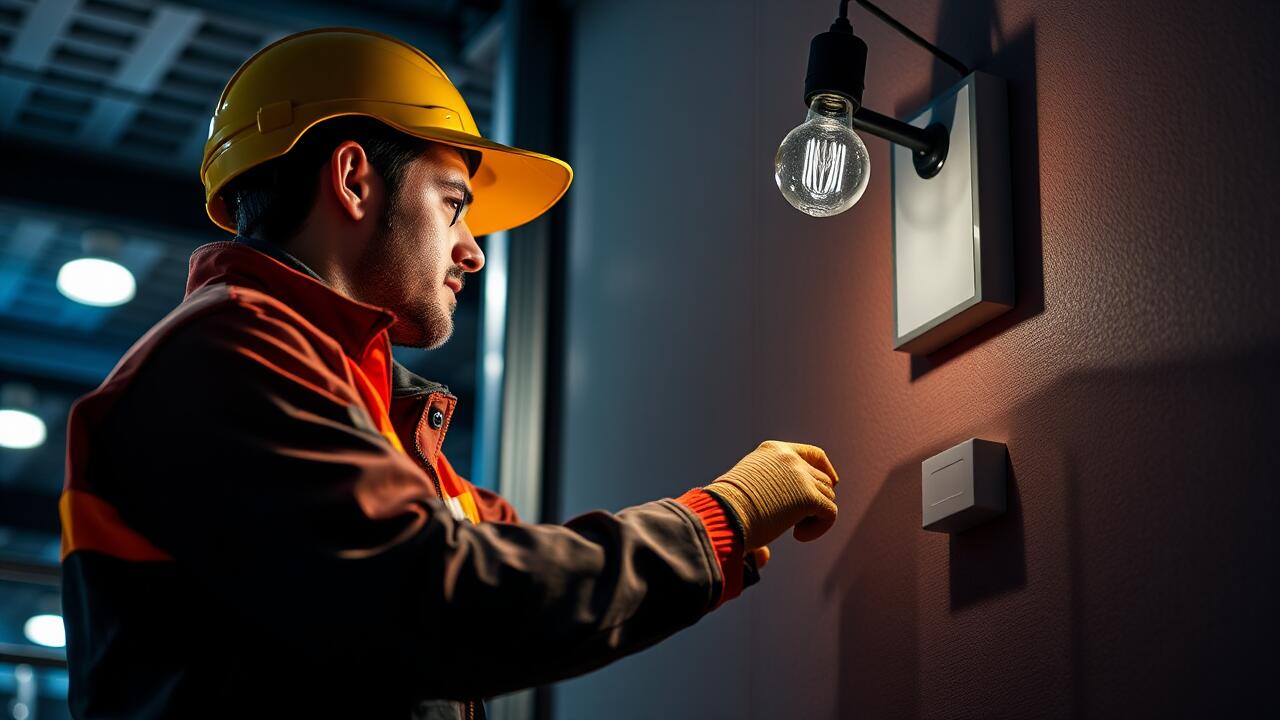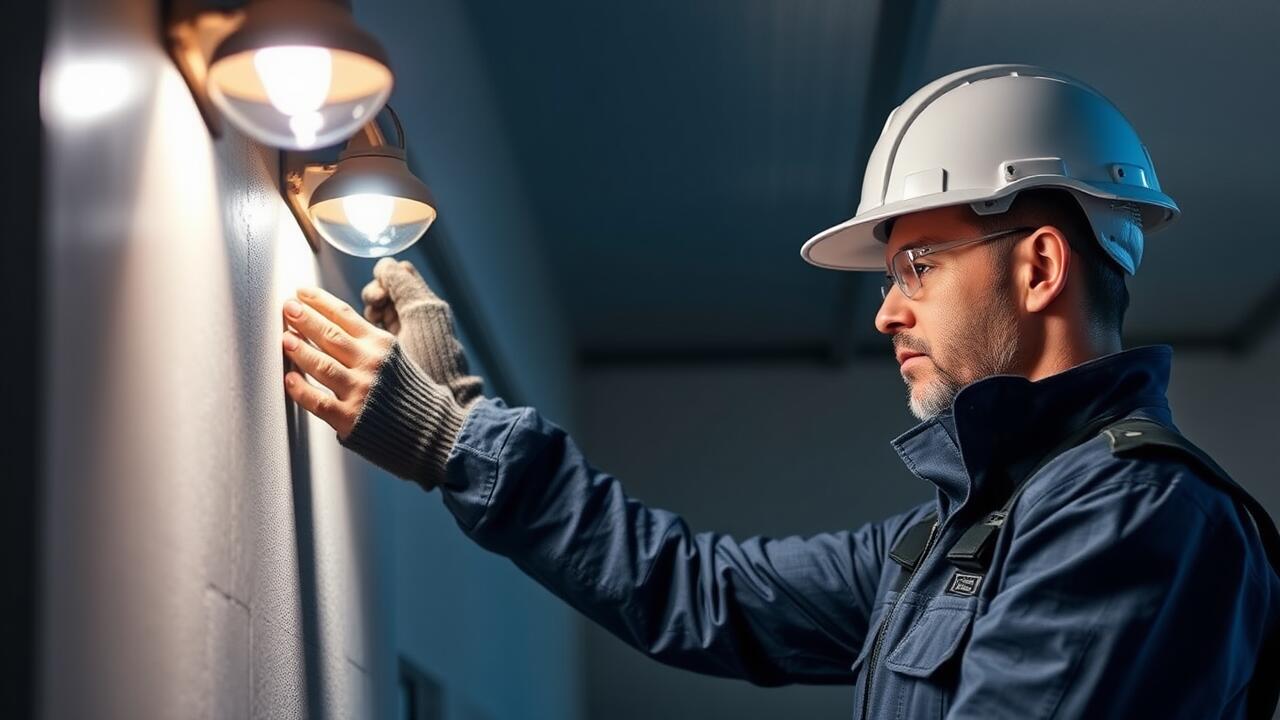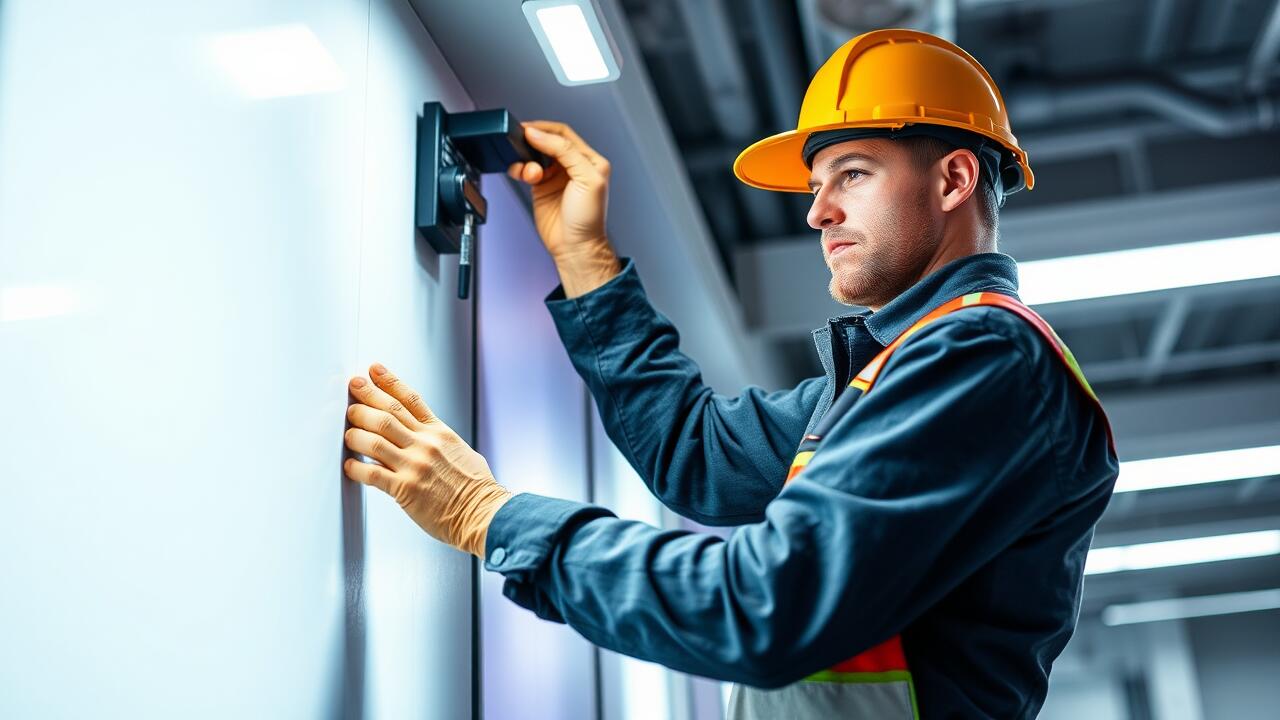
Installing Recessed Lighting
Installing recessed lighting involves careful planning and precise execution. Begin by selecting the appropriate fixtures based on your space and desired brightness. Consider the layout of your room to determine the best locations for the lights, ensuring an even distribution of illumination. Use a stud finder to locate ceiling joists and mark the positions for drilling. Removing insulation and making sure there are no obstructions is crucial for a seamless installation.
When you’re ready to proceed, cut the holes for the recessed fixtures. Be mindful of the wiring requirements; depending on local codes, you may need to run new electrical circuits. Having a clear plan will facilitate an efficient Lighting Installation in Bellaire West, Houston. Once the fixtures are in place, connect the wiring according to the manufacturer's instructions. Test the lights before securing them into the ceiling to ensure everything functions properly.
Key Steps for a Successful Installation
Before starting the installation, it is crucial to plan the layout carefully. Identify the areas where illumination is needed and determine the type of recessed lights that will best meet those needs. Whether using LED, incandescent, or other types, select fixtures that complement the space. For optimal results, measure the ceiling height to ensure the desired beam spread and intensity. When preparing for Lighting Installation in Bellaire West, Houston, also consider the location of joists and any existing electrical wiring, as these factors will influence the ease and feasibility of installation.
Once the planning is complete, gather all necessary tools and materials. This typically includes a stud finder, a drywall saw, and wire connectors. Begin by turning off the electrical circuit to ensure safety. Cut openings for each recessed light according to the manufacturer's specifications. Properly secure the housing units in place, then connect the wiring as per local building codes. Conduct a quick test to confirm that the lights function correctly before finalizing the installation. Proper attention to these steps will help achieve a professional-looking result.
Designing with Recessed Lighting
Incorporating recessed lighting into your design can enhance the aesthetic appeal of any room, providing both functionality and style. Choosing the right fixtures is essential, as they come in various sizes and styles, allowing you to tailor the lighting to your specific needs. For a cohesive look, consider the design elements of the space, such as ceiling height and existing decor, ensuring that the recessed lights blend seamlessly into the overall environment. Proper spacing between fixtures will also contribute to an even distribution of light, helping to eliminate shadows and create an inviting atmosphere.
Focusing on the placement and dimming capabilities of recessed lighting can significantly impact the effectiveness of the layout. Think about using adjustable fixtures to highlight artwork or architectural features. Additionally, planning for different light levels enhances versatility, catering to various activities within the space. For those considering professional guidance, companies offering Lighting Installation in Bellaire West, Houston, can assist in creating a tailored lighting plan that maximizes both form and function.
Tips for Effective Layouts
When designing the layout for recessed lighting, it's essential to consider the overall purpose of the space. Identifying the primary functions of each area will guide placement and intensity. For instance, brighter lighting may be desirable in workspaces, while softer illumination works best in relaxation areas. Utilizing a mix of ambient and task lighting will achieve a balanced effect. Planning the spacing between fixtures is crucial, as proper distance can eliminate harsh shadows and ensure even distribution.
Getting professional assistance can enhance the layout design significantly. Working with an expert in Lighting Installation in Bellaire West, Houston enables homeowners to leverage local knowledge and design trends. Professionals can help maximize the usage of space by recommending innovative positioning techniques. They also consider factors like ceiling height and fixture types, ensuring each installation not only meets aesthetic goals but also provides optimal functionality.
Common Mistakes to Avoid
One common mistake in recessed lighting projects is failing to consider the room’s purpose and lighting needs. Homeowners may overlook the specific activities that will take place in each area, leading to inadequate illumination or overly bright spaces. Strategies like layering different types of lighting and adjusting the distance between fixtures can significantly enhance both visibility and aesthetics. In Bellaire West, Houston, understanding the dynamics of each room is essential for creating a balanced and inviting atmosphere.
Another frequent error occurs during the installation phase, particularly regarding the spacing of fixtures. Placing lights too far apart can create dark spots, while crowding them can result in harsh lighting. It's necessary to calculate the ideal placement based on the size and shape of the room. Every lighting installation in Bellaire West, Houston, should take into account not just the visual appeal but also the functionality of the lighting design, ensuring a comfortable experience in any space.
Troubleshooting Recessed Lighting Issues
Issues with recessed lighting can often stem from improper installation or faulty components. An initial step in troubleshooting involves checking the power supply to ensure the circuit is functioning correctly. If the lights do not illuminate, inspect the circuit breaker and confirm that the bulb is securely fitted in its socket. If flickering occurs, it may indicate a loose connection or an incompatible dimmer switch.
For those engaged in Lighting Installation in Bellaire West, Houston, familiarizing oneself with common problems is crucial for a seamless experience. A frequent issue arises from using bulbs that exceed the fixtures’ wattage ratings, which can lead to overheating and potential damage. Likewise, assessing the layout may reveal shadows or insufficient brightness in certain areas, prompting a reconsideration of bulb type or placement adjustments.
FAQS
What are the benefits of using recessed lighting?
Recessed lighting provides a clean and modern look, saves space, enhances the ambiance of a room, and can be used for both general and task lighting.
How do I determine the right size and type of recessed lights for my space?
The right size and type depend on the room's dimensions, ceiling height, and the desired light output. It's also important to consider the purpose of the lighting—whether for accent, task, or ambient lighting.
Can I install recessed lighting myself, or do I need a professional?
While some homeowners may successfully install recessed lighting themselves, hiring a professional is recommended, especially for electrical work, to ensure safety and code compliance.
What are some common mistakes to avoid when installing recessed lighting?
Common mistakes include improper spacing, poor placement, inadequate wattage, and failing to account for beam angles, which can lead to uneven lighting.
How can I troubleshoot issues with my recessed lighting?
Start by checking the light bulbs, ensuring they are properly seated. If the issue persists, inspect the wiring and switch. If you're unable to resolve the problem, consider consulting a qualified electrician.





